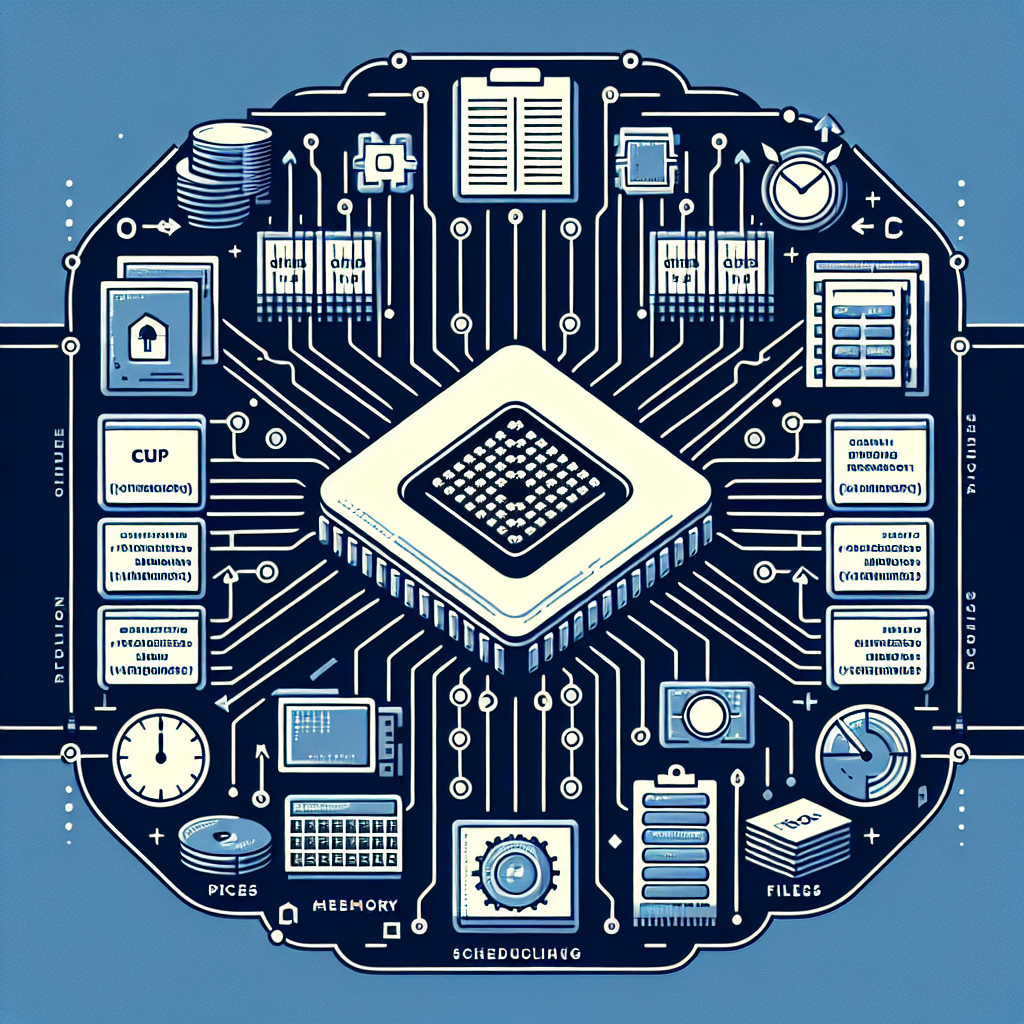
What is the role of the CPU in managing system resources?
The Central Processing Unit (CPU) is often referred to as the brain of a computer. Its role in managing system resources is crucial for the seamless operation of any computing device. But what exactly does the CPU do to ensure that all system components function harmoniously? Let’s dive into the core functions of the CPU and its pivotal role in resource management.
Understanding the Basics of the CPU
The CPU performs fundamental operations including executing instructions, making calculations, and coordinating the activities of other hardware components. These tasks are essential for any program or application to run efficiently.
Core Components of a CPU
- Arithmetic Logic Unit (ALU): Handles all arithmetic and logical operations.
- Control Unit (CU): Directs the operation of the processor and orchestrates how data moves around the system.
- Registers: Small storage locations that temporarily hold data and instructions.
How the CPU Manages System Resources
The role of the CPU in managing system resources can be broadly divided into several key tasks:
Memory Management
Memory management involves allocating and deallocating memory spaces as needed by programs. The CPU works closely with the memory management unit (MMU) to:
- Track which parts of memory are currently being used.
- Assign memory spaces to various applications and processes.
- Reclaim memory that is no longer in use.
This ensures that active applications get the memory they need while maintaining overall system stability.
Process Management
Multitasking environments require the CPU to handle multiple processes simultaneously. The CPU uses scheduling algorithms to allocate time slices to various processes in a manner that maintains system efficiency and responsiveness. The key responsibilities here include:
- Process scheduling: Determining the order in which processes are executed.
- Context switching: Saving the state of a process and loading the state of another process.
- Process synchronization: Ensuring that interdependent processes can execute without conflicts.
I/O Management
The CPU also plays a vital role in managing Input/Output (I/O) operations. This involves coordinating the flow of data between peripherals (like keyboards, mice, and printers) and the system. Effective I/O management by the CPU results in:
- Buffering: Temporarily storing data to manage the speed mismatch between the CPU and I/O devices.
- Caching: Storing frequently accessed data for quicker retrieval.
- Interrupt handling: Prioritizing and managing interrupts from different sources to ensure smooth operation.
Security and Access Control
The CPU enforces various security measures to protect system resources. These include:
- Memory protection: Preventing unauthorized access to certain memory areas.
- User authentication: Ensuring that only authorized users can access specific resources.
- Executing security protocols: Running antivirus scans and other security checks.
CPU Resource Management: Challenges and Solutions
Effective resource management by the CPU comes with its own set of challenges, including:
- Resource contention: Multiple processes vying for the same resources.
- Deadlocks: Situations where processes are stuck waiting for each other to release resources.
- Performance bottlenecks: Overloading the CPU beyond its capacity to manage resources effectively.
To mitigate these challenges, several solutions are employed:
- Advanced scheduling algorithms: Prioritizing tasks efficiently to avoid bottlenecks.
- Load balancing: Distributing tasks across multiple CPUs or cores to manage workload.
- Resource monitoring tools: Providing real-time data on resource usage to enable proactive management.
Conclusion
The CPU’s role in managing system resources is indispensable for any computing environment. From memory allocation to process scheduling and I/O management, the CPU ensures that all system components work in tandem. As technology advances, the complexity and efficiency of CPU resource management continue to evolve, laying the foundation for more powerful and responsive computing systems.
